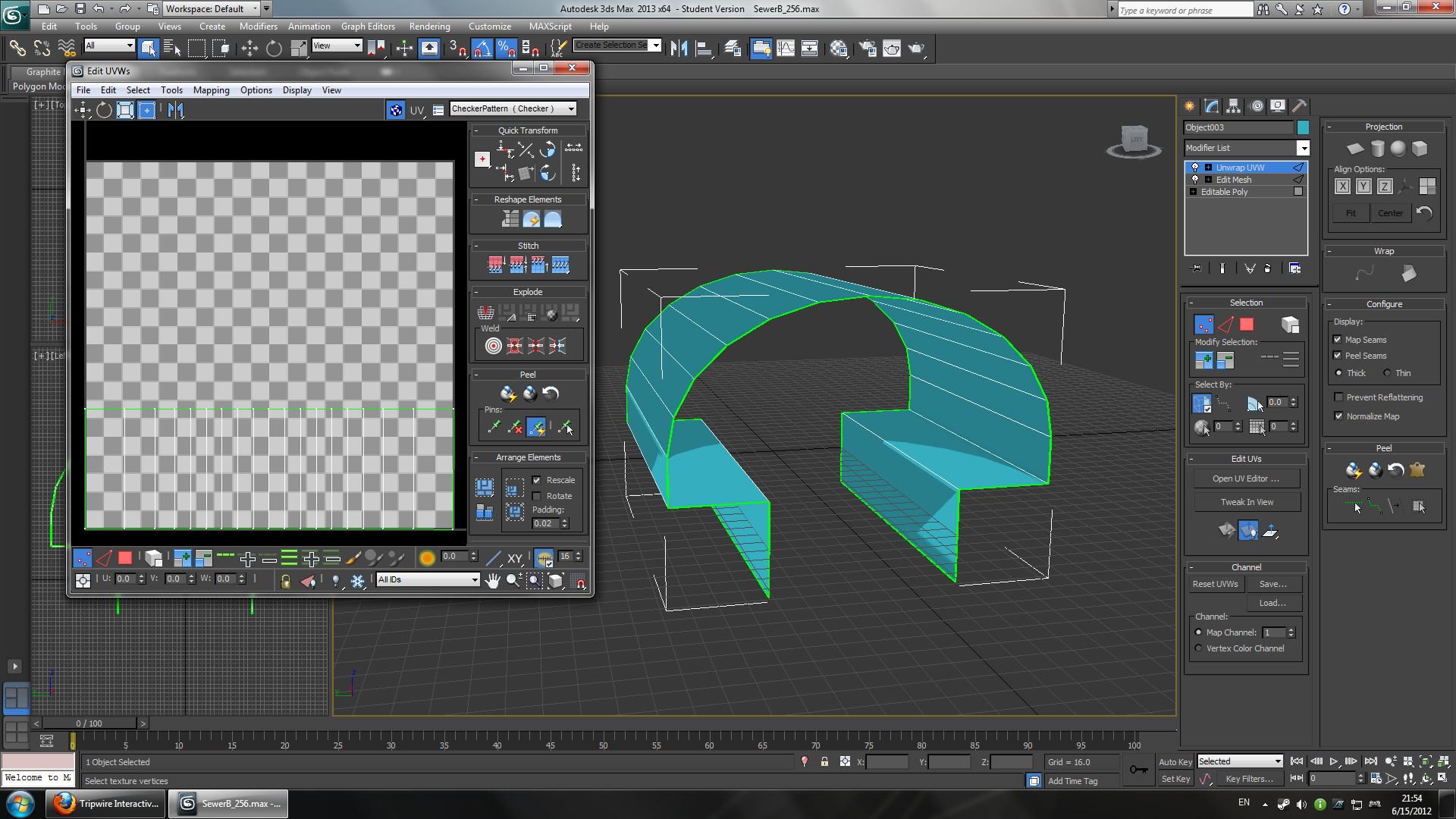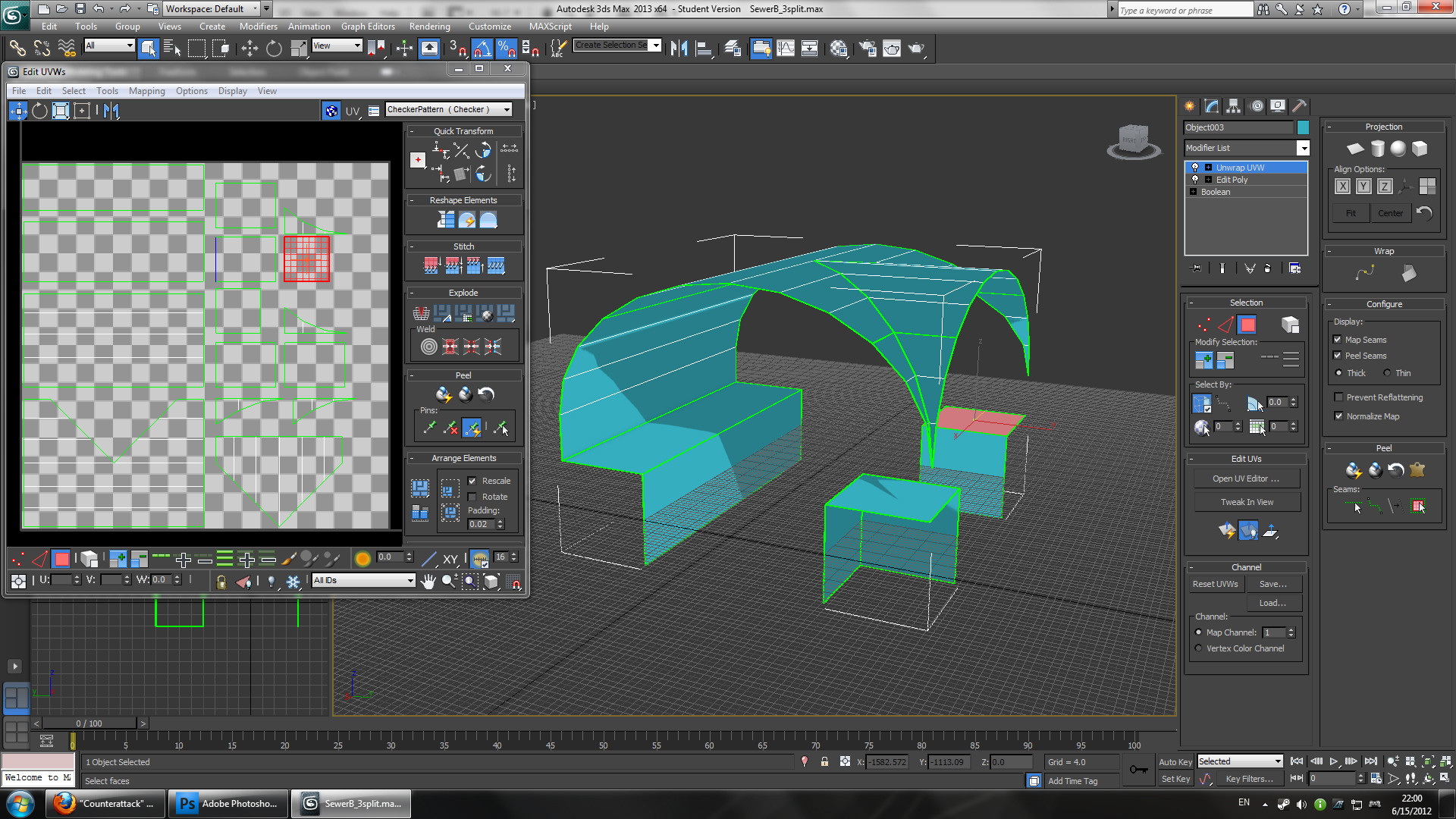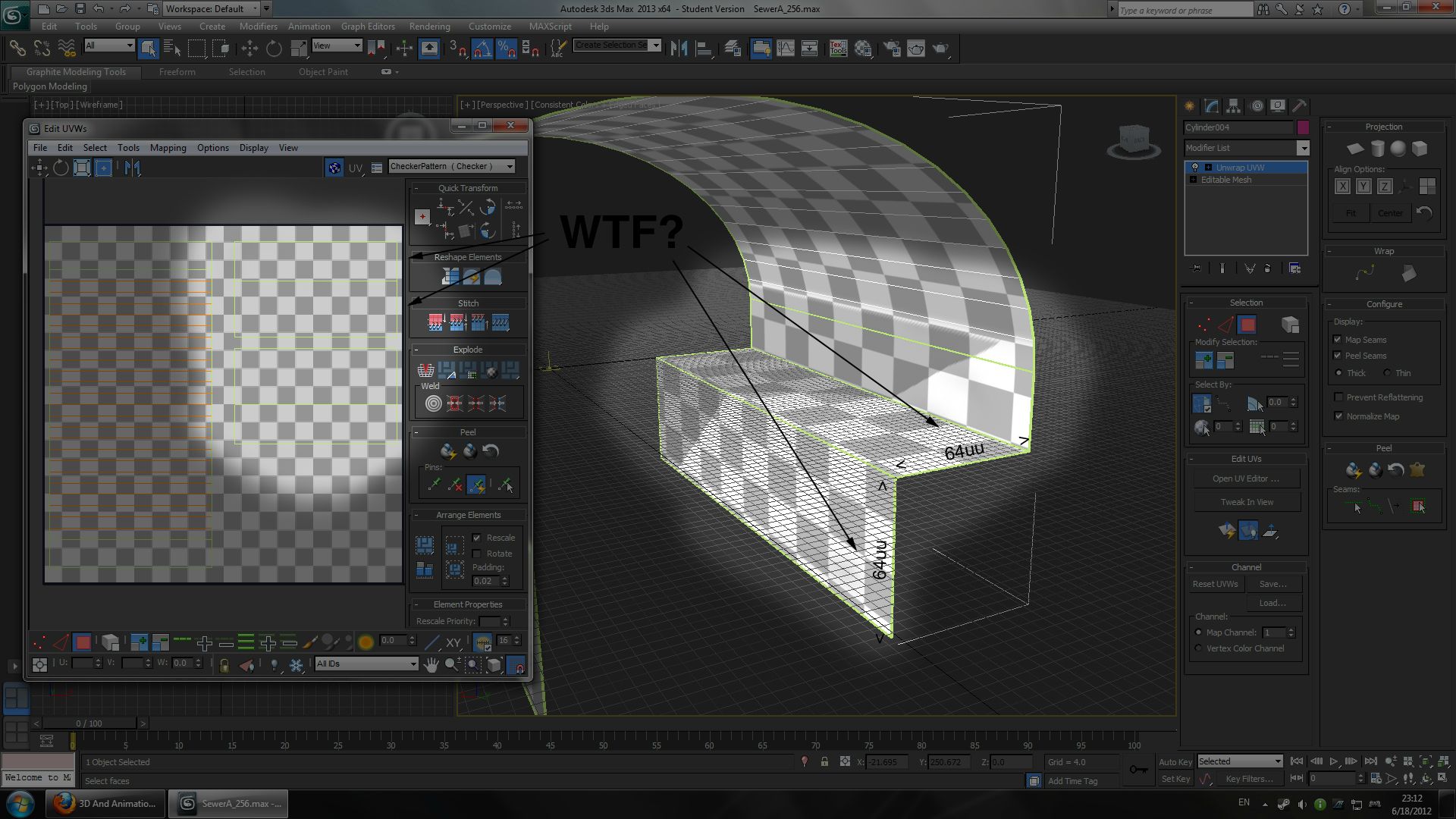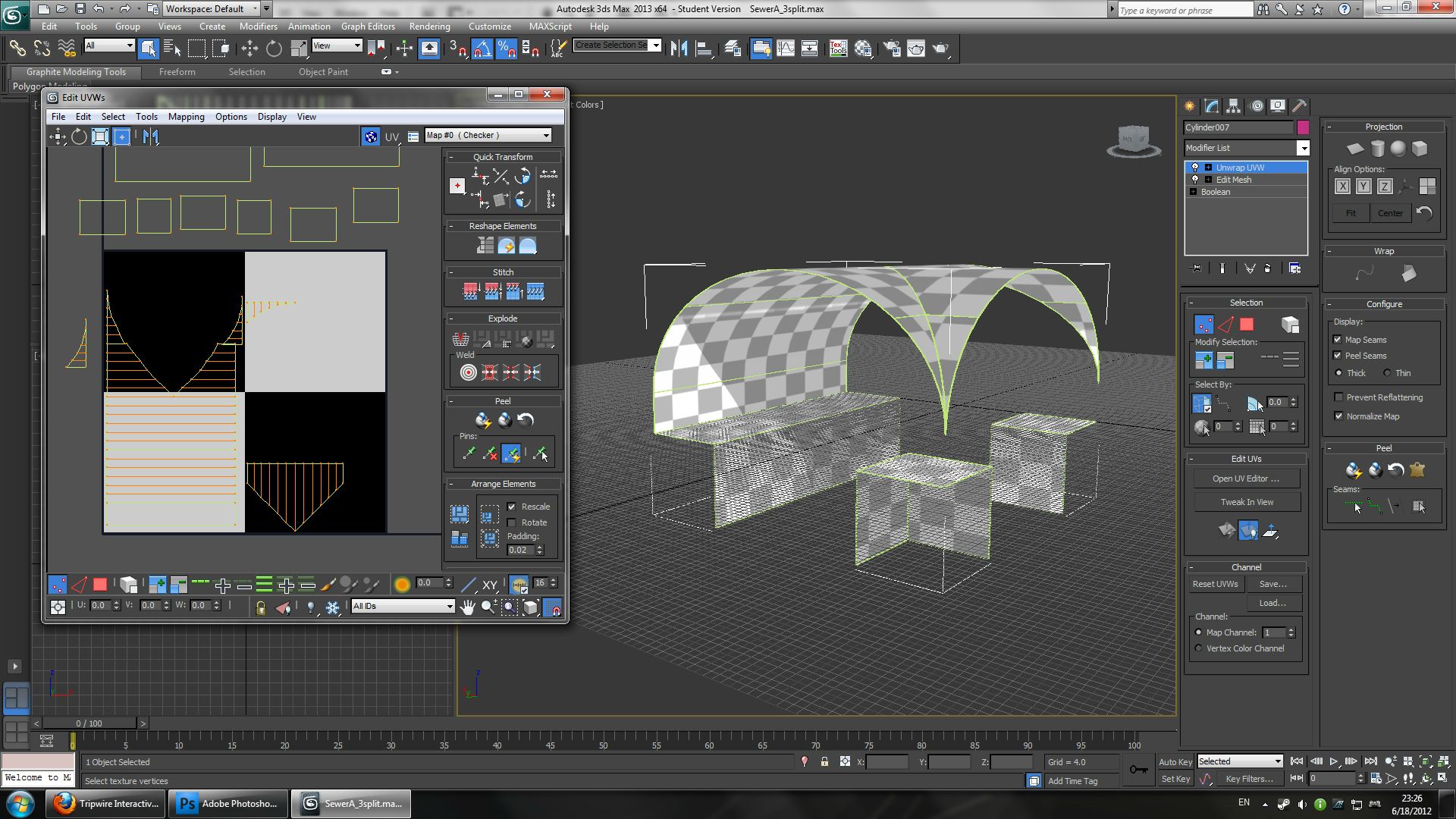So, despite picking up 3ds Max a week ago and having absolutely no grasp of how to use the program, I managed to put together a working straight sewer mesh (SewerB_256) with a working UV:

I'm trying to work on a seamless 3-way junction (SewerB_3split) to go along with it, but I'm having trouble getting 3ds Max's UV editor to produce a UV map for SewerB_3split that is in the exact same scale as SewerB_256's UV map.
 Ideally, I'd like to get both UVs all nice and lined up on a snap-grid so I can match them to scale by hand, but the magnet icon in the corner of the UV editor doesn't really seem to do anything so I'm left with just the automatic unwrapping tools which are ill-suited to a simple mesh like this. I know 3ds Max isn't intended to be used for ultra-precise modelling like AutoCAD or something like that, but surely something as simple as this must be possible to do.
Ideally, I'd like to get both UVs all nice and lined up on a snap-grid so I can match them to scale by hand, but the magnet icon in the corner of the UV editor doesn't really seem to do anything so I'm left with just the automatic unwrapping tools which are ill-suited to a simple mesh like this. I know 3ds Max isn't intended to be used for ultra-precise modelling like AutoCAD or something like that, but surely something as simple as this must be possible to do. 
Can anyone give me some tips here, or perhaps direct me to a tutorial that teaches how to do precision UV mapping in 3ds Max? Maybe there's a plugin out there that's good for this?
Spoiler!

I'm trying to work on a seamless 3-way junction (SewerB_3split) to go along with it, but I'm having trouble getting 3ds Max's UV editor to produce a UV map for SewerB_3split that is in the exact same scale as SewerB_256's UV map.
Spoiler!

Can anyone give me some tips here, or perhaps direct me to a tutorial that teaches how to do precision UV mapping in 3ds Max? Maybe there's a plugin out there that's good for this?



